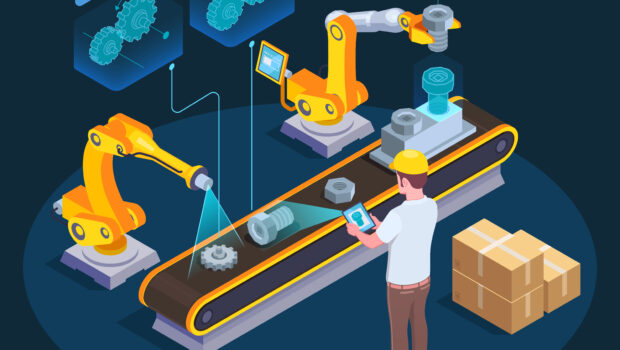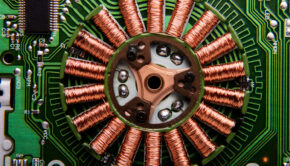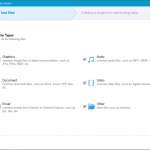Digital Twinning in Manufacturing: Bridging the Gap Between the Physical and Digital
In the manufacturing sector, the digital revolution has introduced a concept that is radically transforming how operations are conducted, optimized, and innovated. This concept, known as digital twinning, involves creating a virtual replica of a physical manufacturing process, product, or system. This digital mirror allows for real-time monitoring, simulation, and analysis, offering unprecedented insights into the manufacturing lifecycle. As we delve deeper into the applications and implications of digital twinning in manufacturing, it becomes evident that this technology is not just an enhancement to existing processes but a foundational shift towards a more integrated, efficient, and innovative manufacturing paradigm.
Enhancing Design and Product Development
The journey of a product from conception to production is fraught with challenges, particularly in ensuring that the design is both functional and manufacturable. Digital twins serve as a critical tool in this phase, allowing designers and engineers to simulate and test products in a virtual environment. This process significantly reduces the need for physical prototypes, cutting down on costs and development time. Manufacturers can experiment with different materials, designs, and manufacturing processes virtually, identifying potential issues and optimizing designs before a single physical model is produced. This not only accelerates product development but also fosters innovation, enabling the creation of products that were previously impossible to manufacture.
Streamlining Production Processes
At the heart of manufacturing lies the constant quest for efficiency and productivity. Digital twins of production lines and entire factories offer a detailed insight into operational workflows, enabling manufacturers to identify bottlenecks, inefficiencies, and opportunities for optimization. By simulating changes in the production process, manufacturers can predict the impacts on throughput, quality, and cost, making informed decisions about process adjustments. Furthermore, the integration of IoT devices and sensors with digital twins allows for real-time monitoring and control, ensuring that the physical production process aligns closely with its virtual counterpart.
Predictive Maintenance and Operational Reliability
Equipment downtime in manufacturing can lead to significant losses in productivity and revenue. Digital twinning addresses this issue by enabling predictive maintenance, where the virtual model of a machine is used to monitor its condition and predict failures before they occur. By analyzing data from sensors on the physical equipment, the digital twin can identify patterns indicative of wear or impending breakdowns, allowing maintenance for your servo motors, drives, or any other equipment to be scheduled at optimal times. This proactive approach not only reduces downtime but also extends the lifespan of equipment, contributing to long-term operational reliability and cost savings.
Customization and Customer Engagement
The demand for customized products has grown exponentially, posing a challenge for manufacturers accustomed to mass production. Digital twins offer a solution by enabling the virtual design and testing of customized products according to individual customer specifications. This process allows customers to be more involved in the product design phase, enhancing their engagement and satisfaction. Moreover, by simulating the production of customized products, manufacturers can ensure that these unique items can be efficiently integrated into existing production lines, balancing customization with operational efficiency.
Training and Workforce Development
As manufacturing processes become increasingly complex, the need for skilled labor intensifies. Digital twins provide an innovative approach to training, offering a virtual environment where employees can learn and interact with the manufacturing process without the risks associated with physical machinery. This hands-on experience in a controlled setting accelerates learning, enhancing workforce competency and confidence. Additionally, digital twins can be used to simulate emergency situations or rare operational scenarios, ensuring that employees are well-prepared for any challenges they might face on the factory floor.
Navigating Challenges
Despite the clear advantages, the implementation of digital twinning in manufacturing is not devoid of challenges. The creation and maintenance of a digital twin require substantial data collection and processing capabilities, raising concerns about data privacy and security. Additionally, the initial investment in technology and training can be significant, potentially hindering adoption among smaller manufacturers.
Moreover, the success of digital twinning depends on the accuracy and fidelity of the virtual model. Ensuring that the digital twin remains an accurate reflection of its physical counterpart over time requires continuous updates and adjustments, necessitating a commitment to ongoing management and refinement.
Conclusion
Digital twinning in manufacturing represents a convergence of the physical and digital worlds, offering a window into the future of the industry. By enhancing product development, streamlining production processes, enabling predictive maintenance, and facilitating customization, digital twins are paving the way for a new era of manufacturing efficiency and innovation. Despite the challenges, the potential benefits of this technology are immense, promising not only operational improvements but also a deeper understanding of manufacturing systems as living entities that evolve over time. As manufacturers navigate the complexities of the 21st century, digital twinning stands as a beacon of progress, guiding the industry towards a more integrated, efficient, and responsive future.
Cover Image by Freepik
















